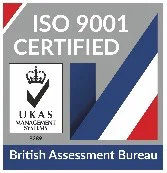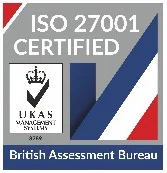Community Risk Review and Assessment of Risk - February 2022
Disclaimer and Accreditations
This document has been produced by ORH for Nottinghamshire Fire and Rescue Service on 18 June 2021. This document can be reproduced by Nottinghamshire Fire and Rescue Service, subject to it being used accurately and not in a misleading context. When the document is reproduced in whole or in part within another publication or service, the full title, date and accreditation to ORH must be included.
ORH is the trading name of Operational Research in Health Limited, a company registered in England with company number 2676859.
ORH’s quality management system is ISO 9001:2015 certified: recognition of ORH’s dedication to maintaining high quality services for its clients.
ORH’s information security management system is ISO 27001:2017 certified: evidence of ORH’s commitment to implementing international best practice with regard to data security.


Disclaimer
The information in this report is presented in good faith using the information available to ORH at the time of preparation. It is provided on the basis that the authors of the report are not liable to any person or organisation for any damage or loss which may occur in relation to taking, or not taking, action in respect of any information or advice within the document.
Accreditations
Other than data provided by Nottinghamshire Fire and Rescue Service, this report also contains data from the following sources:
HERE UK and NI
© 2020 HERE All rights reserved. Based upon Crown Copyright material
UK Ordnance Survey
Contains National Statistics data © Crown copyright and database right 2020 Contains OS data © Crown copyright and database right 2020
CENSUS 2011
Office for National Statistics: 2011 Census aggregate data. UK Data Service (Edition: June 2016). This information is licensed under the terms of the Open Government Licence.
Index of Multiple Deprivation
Ministry of Housing, Communities and Local Government: 2019 IMD Data. This information is licensed under the terms of the Open Government Licence.
Energy Performance Certificates
Ministry of Housing, Communities and Local Government & Royal Mail. Contains Royal Mail Copyright Material.
Report Overview
Executive Summary
The main purpose of this project was to provide an evidence base to NFRS to support its CRMP and strategic decision making.
While the objective was to provide evidence as a basis for internal decisions, some of the key points arising that NFRS may wish to consider are as follows:
- ORH has provided evidence that can be used in refining NFRS’s approach to targeted prevention and protection work.
- There is potential for NFRS to improve wholetime turnout times, which in turn improve response times and the response to risk.
- In terms of station locations, if the opportunity arose to relocate Edwinstowe station to Ollerton junction, this could provide improved cover. The location at Ollerton junction repeatedly arose as a good location in the various strands of location optimisation modelling.
- If NFRS were looking to increase pumping appliance provision in any areas, the evidence in this report suggests the greatest scope for improvement would involve considering options around Mansfield and/or Ashfield stations.
- If NFRS were to consider a reduction in wholetime pump provision in any areas, the evidence in this report suggests options rationalising the crewing between London Road and West Bridgford, which are in relatively close proximity to one another.
Introduction
Nottinghamshire Fire and Rescue Service (NFRS) commissioned Operational Research in Health Limited (ORH) to undertake this independent fire cover review and strategic assessment of risk.
NFRS is preparing for an update of its Community Risk Management Plan (CRMP). This work involves identifying and assessing the risks across the service and ensuring that resourcing is in place to best address this risk.
This report is an evidence base which makes use of NFRS data. ORH has assessed alternative response operations and used further data sources to identify risk characteristics to inform prevention and protection strategies.
This report does not constitute a stand-alone piece of work, but needs to be considered in the wider NFRS context alongside professional judgement, local knowledge, statutory duties, financial considerations and other strategic priorities.
ORH has significant experience of working with fire and rescue services and other emergency services, with more information provided on the following pages and at http://www.orhltd.com/
ORH
ORH helps emergency services around the world to optimise resource use and respond in the most effective and efficient way.
We have set the benchmark for emergency service planning, with a proven approach combining rigorous scientific analysis with experienced, insightful consultancy. Our expert team uses sophisticated modelling techniques to identify opportunities for improvement and uncover hidden capacity. Simulating future scenarios ensures that solutions are objective, evidence-based and quantified.
Every organisation faces a unique set of challenges, so remaining independent and flexible allows us to deliver an appropriate solution every time. The outputs of our work enable clients to make robust, data-driven decisions and explain them clearly to stakeholders.
ORH’s approach is always tailored to the needs of the client. Above all, we are committed to getting it right, for the good of our clients and the people who rely on their services.
ORH Support to FRSs
- Risk
- Quantifying Risks
- Identifying Relationships
- Targeting Activities
- Resources
- Matching to Risk
- Optimal Locations
- Resource Types
- Response
- Efficient and Effective
- Day-to-day Management
- Contingency Planning
Scope
The agreed scope between NFRS and ORH is summarised as follows:
| Scope Area | Detail |
|---|---|
| Station Optimisation |
|
| Appliance Risk Prioritisation | Assess the impacts of removing each of the 30 pumps individually |
| Response Time Review | Assess alternative metrics for measuring response performance, considering types of incidents, reporting areas and response number |
| Special Review | Identify the optimal stations to deploy:
|
| Building Risk Integration | Assess the coverage provided to static risk profiles |
| Prevention and Protection | Identify the characteristics of demographics and built environment that have the strongest relationship to incidents occurring to inform prevention and protection activites |